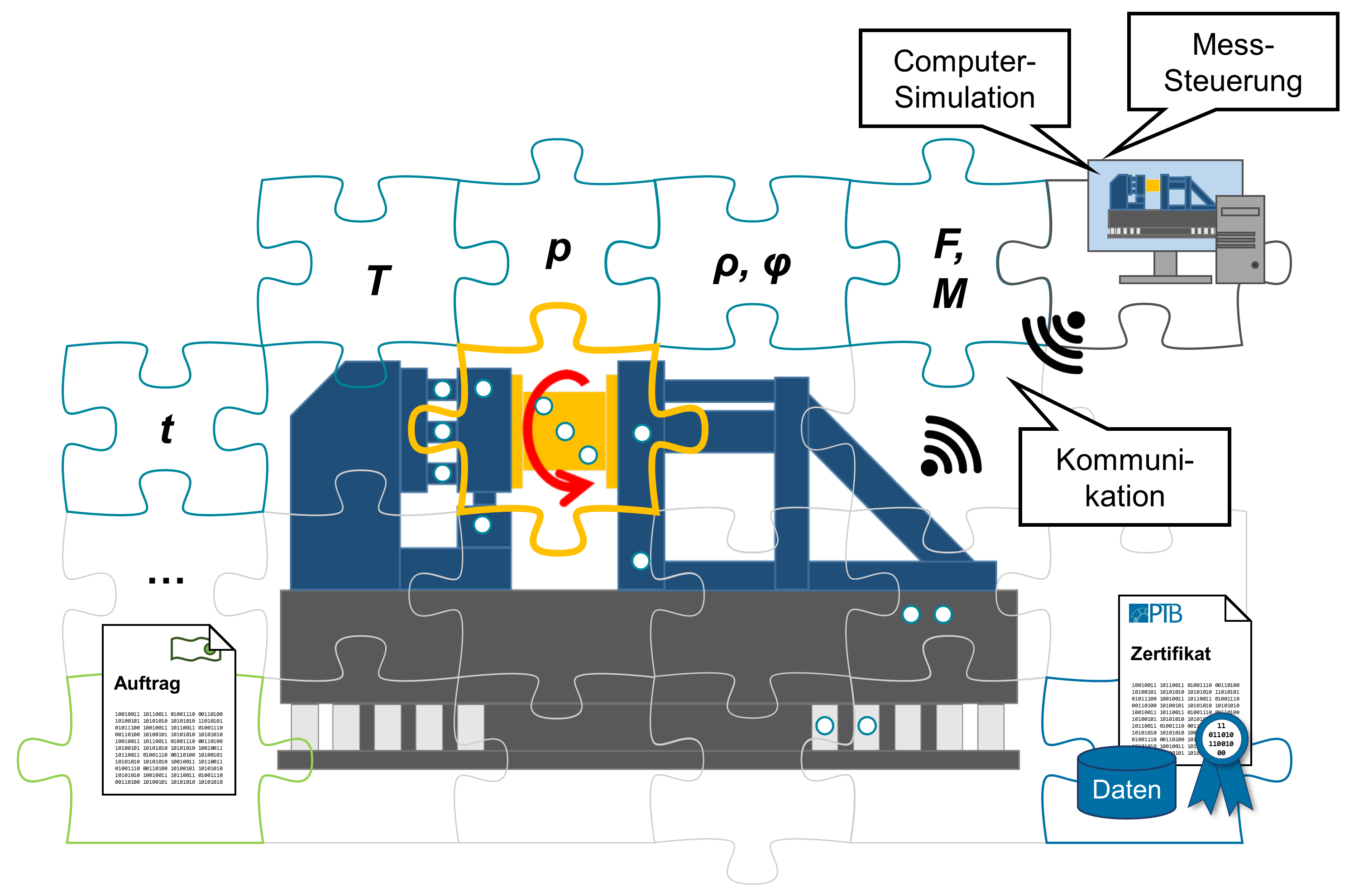Nowadays, before the actual start of production, manufacturing processes are first simulated in order to avoid errors and save resources (time, material, etc.). In these simulations, the properties of all the equipment and processes used in the manufacturing chain play a decisive role. Therefore, another goal of the GEMIMEG project is the development of Digital Twins (DT). These DT are precise numerical representations of the real devices and processes used. Among other things, they are created on the basis of the DCC in combination with the physical models, to which numerical methods are then applied. In addition, DTs take into account system information such as unique identification of individual components and information about the current system state (e.g., measured values of environmental conditions) or "intelligent" expert knowledge that enables predictions about maintenance intervals. For example, the production of a single piece with a given accuracy could be simulated on different production lines and then the production line that delivers the highest value added could be selected.
The DT of simple sensors such as temperature sensors represent the basic (simple) DT types. The DT of more complex measuring devices and systems, which can be built up from these simple basic types like a puzzle, represent DT types of hierarchically higher orders. From a metrological point of view, PTB has the profound know-how to model Digital Twins and to integrate them into a digital platform in the form of software modules. Ultimately, all DTs within the digital platform must be able to communicate intelligently with each other, regardless of the manufacturer. The basis for the universal interface of the Digital Twin is laid by the Digital Calibration Certificate.
Ideal conditions for the development of such a digital platform are provided by PTB's new Competence Center for Wind Energy, which is currently being established. Two of the metrological facilities being built there allow the greatest possible flexibility to establish future-oriented structures together with renowned and influential industrial partners as well as leading representatives from science: The new torque standard machine (DM-NME) as the world's largest measuring device for the calibration of large torques (up to 20 MN∙m, PTB in-house development) and the new large coordinate measuring machine (large CMM) (measuring volume 5 m x 4 m x 2 m; commercially available and industrially widely used) for the dimensional measurement of large components.
The digital platform to be developed here (cf. Figure 2) is to be set up - in contrast to a test environment or testbed - as a "production environment" or "realbed". The aim of the GEMIMEG project will be to build up a fully functional system that will enable permanent, fully digital calibration operation. An integral part of this "realbed" will be a large number of sensors such as temperature, humidity or sound level sensors. With the widespread use of such sensors in almost all industrial areas, the targeted developments have a high dissemination potential. This is also clearly reflected in the great interest shown by our partners from industry and an increased internal PTB bundling of all digitization aspects. In addition, the national dissemination channel offers good conditions for setting modern standards for the international market as well.

